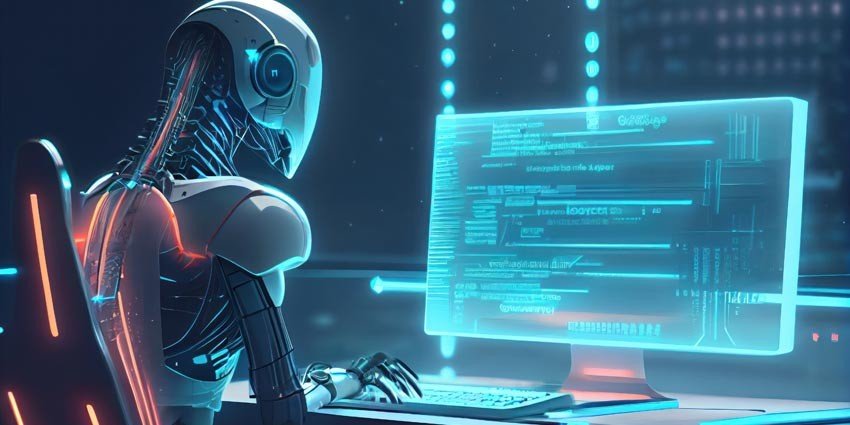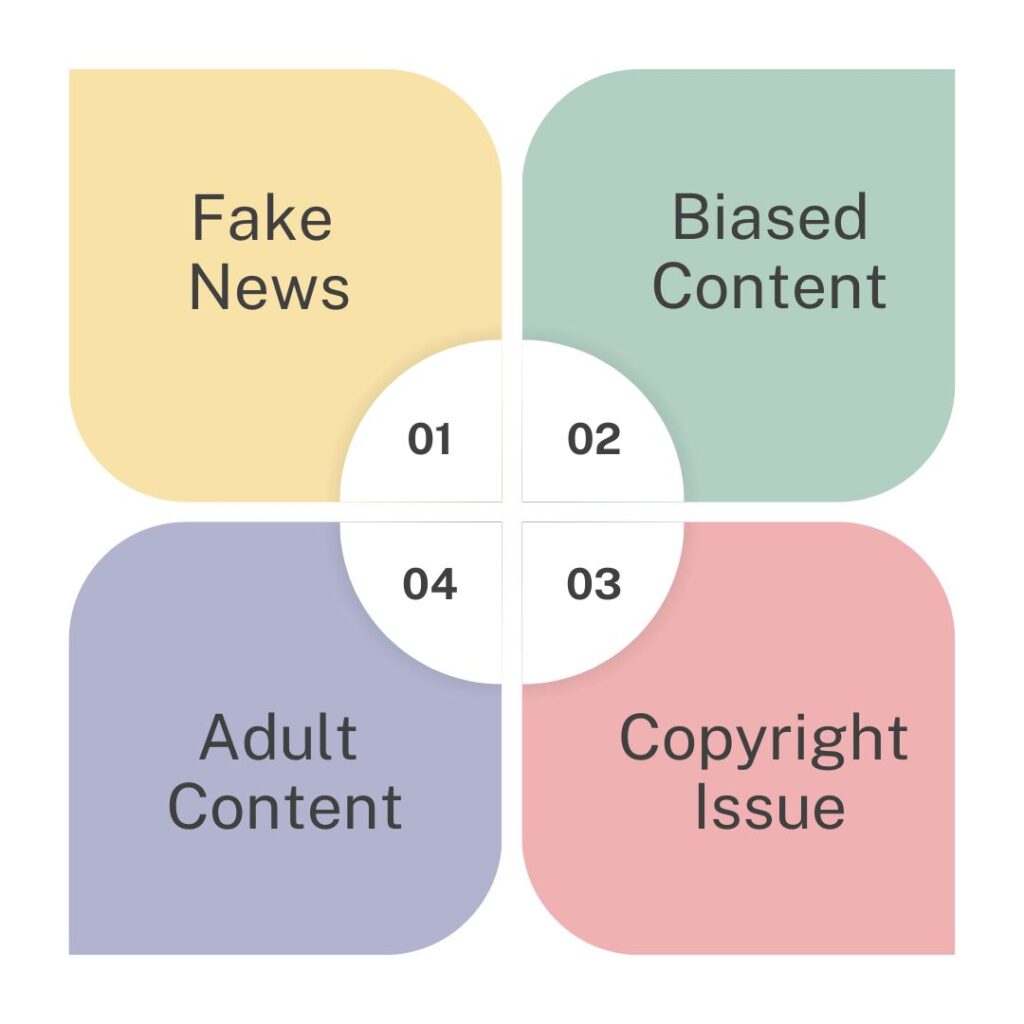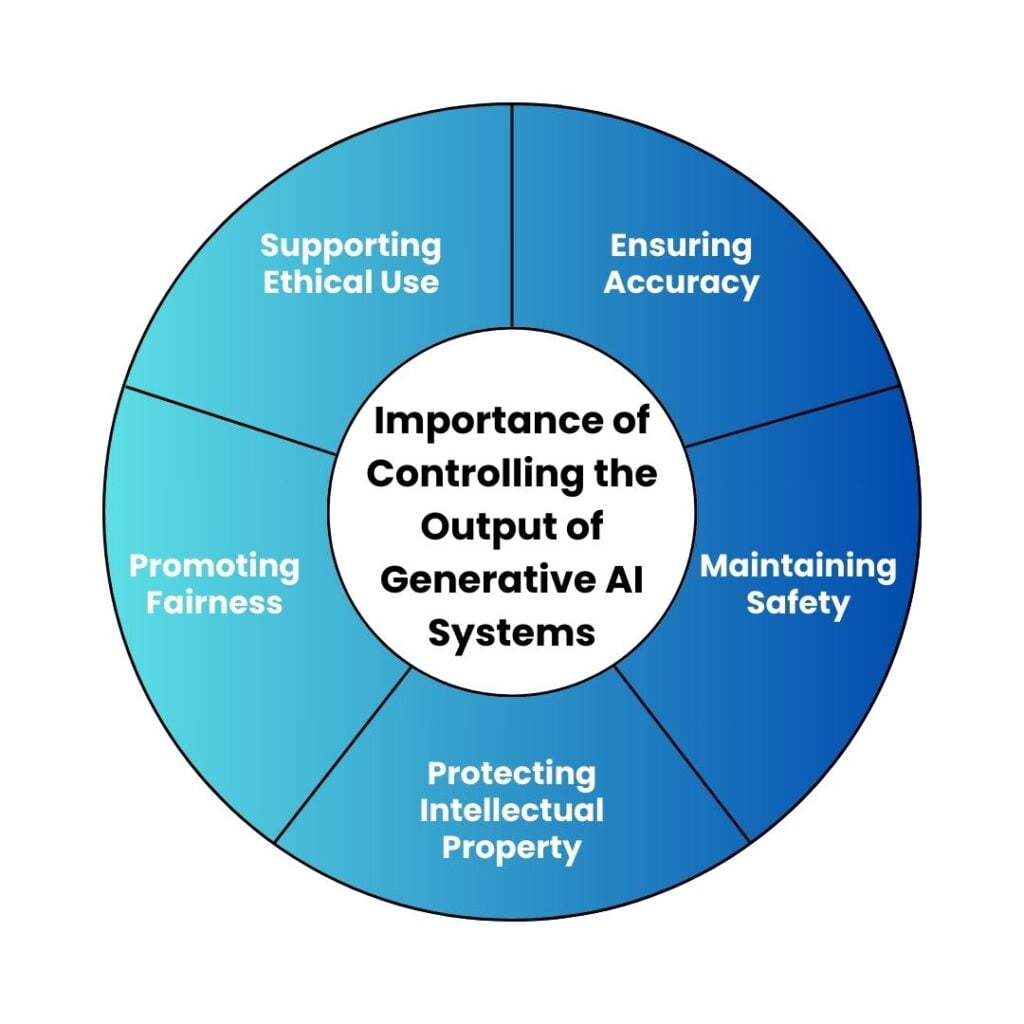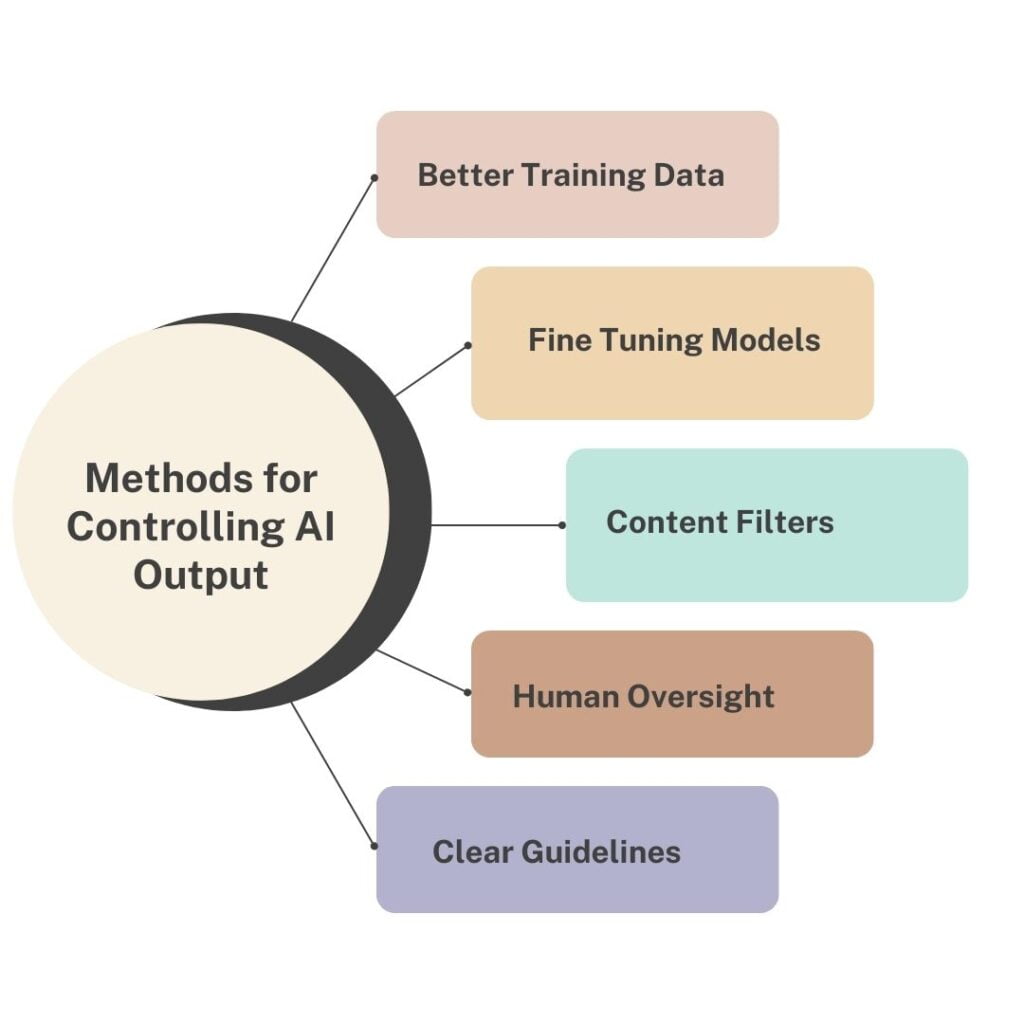Generative AI systems are changing how we create content. These smart tools can write, draw, and even make music. But with great power comes great responsibility.
Controlling the output of generative AI is important because it helps to ensure the content is accurate, safe, and useful. Without proper control, AI might produce harmful or misleading information, which can cause problems for users and society.
In this blog, we’ll explore why is controlling the output of generative ai systems important. We’ll look at the risks of uncontrolled AI and discuss ways to make sure these powerful tools help rather than harm. Let’s dive in and learn how to use AI responsibly.
Table of Contents
- What are Generative AI Systems?
- Risks of Uncontrolled AI Output
- Importance of Controlling the Output of Generative AI Systems
- Methods for Controlling AI Output
- Challenges in Controlling AI Output
- Future of Controlled AI Output
- Conclusion
What are Generative AI Systems?

Generative AI systems are smart computer programs that can create new content. They learn from lots of data and then make things like text, images, or even music. Think of them as really clever robots that can be creative.
Some popular examples are ChatGPT, which writes text, and DALL-E, which makes pictures. These AI tools work by looking at patterns in the data they’ve learned from. Then, they use these patterns to create new stuff that looks like it was made by humans.
These systems are getting better all the time. They can help with tasks like writing stories, answering questions, or designing logos. But remember, they’re still computers, not magic!
Risks of Uncontrolled AI Output

When AI systems are left unchecked, they can cause some real problems. Let’s look at a few risks:
Risk 1: Fake News
First off, there’s the issue of fake news. AI can create realistic-looking stories that aren’t true. If these spread, they can confuse people and cause trouble.
Risk 2: Biased Content
Another problem is biased content. AI learns from data, and if that data is biased, the AI’s output will be too. This can lead to unfair or hurtful content.
Risk 3: Creating Not Appropriate Content
AI might also create stuff that’s not appropriate for everyone. Without filters, it could produce content that’s too adult or violent for some users.
Risk 4: Copy
Lastly, there’s the worry about copying. AI can sometimes recreate things that are protected by copyright. This could get people in legal hot water.
These risks show why it’s so important to keep an eye on what AI is creating. We need to make sure it’s helpful, not harmful.
Importance of Controlling the Output of Generative AI Systems

Controlling AI output is crucial for several reasons:
Ensuring Accuracy
- AI can make mistakes or create false information
- Control helps ensure the content is correct and reliable
- This builds trust in AI-generated content
Maintaining Safety
- Uncontrolled AI might produce harmful or offensive material
- Control measures help keep content safe for all users
- This protects people, especially kids, from unsuitable content
Protecting Intellectual Property
- AI can accidentally copy existing work
- Control helps avoid copyright issues
- This respects original creators and their rights
Promoting Fairness
- AI can pick up and repeat biases
- Control helps ensure AI treats everyone fairly
- This creates a more inclusive digital world
Supporting Ethical Use
- AI raises new ethical questions
- Control helps align AI use with human values
- This ensures AI benefits society as a whole
By controlling AI output, we make sure these powerful tools help rather than harm. It’s all about using AI responsibly and making the most of its potential.
Methods for Controlling AI Output

1. Better training data
AI learns from the information we give it. To control its output, we need to start with good data. This means using high-quality, diverse information to train the AI. When we do this, the AI is less likely to have biases and more likely to give accurate results.
2. Fine-tuning models
- Adjust AI for specific tasks
- Improves relevance and focus
- Makes output more reliable
3. Content filters
Content filters are like safety nets for AI output. They catch and block inappropriate or harmful content before it reaches users. This helps keep AI-generated material safe and suitable for everyone.
4. Human oversight
Having people check AI-generated content is crucial. Humans can spot errors or problems that AI might miss. This extra step helps ensure the quality and appropriateness of what the AI produces.
5. Clear guidelines
Setting clear rules for AI is important. These guidelines tell the AI what it should and shouldn’t do. They help steer the AI in the right direction, making its output more useful and less likely to cause problems.
Challenges in Controlling AI Output
Controlling AI isn’t always easy. We want AI to be creative, but also safe. Finding this balance is tricky. AI technology changes fast, so our control methods need to keep up.
Different cultures have different ideas about what’s okay. AI needs to understand these differences to work well everywhere. Sometimes, AI can surprise us with unexpected outputs. We need to be ready for these surprises.
It’s important to know how AI makes decisions. However, some AI systems are hard to understand. This lack of transparency can make it difficult to control AI effectively.
Future of Controlled AI Output
In the future, AI might learn to check its own work. This could make it more reliable and easier to trust. Governments might set new rules for AI use, helping to make it safer for everyone.
As we learn more about how AI thinks, we’ll get better at controlling it. Users might get more say in what AI creates, making it more personal and useful.
AI creators might focus more on building good values in AI from the start. This could lead to AI systems that are more trustworthy and beneficial to society.
As AI grows, so will our ability to control it. The goal is to make AI a helpful tool that we can rely on without worrying about harmful effects.
Conclusion
In conclusion, controlling the output of generative AI systems is important for many reasons. It helps ensure that AI-created content is accurate, safe, and useful.
Without proper control, AI could produce harmful or misleading information, which might cause problems for users and society. As we’ve seen, there are methods to manage AI output, but challenges remain. The future of AI control looks promising, with new techniques and rules on the horizon.
By understanding why controlling the output of generative AI systems is important, we can work towards using these powerful tools responsibly. This will help us make the most of AI’s potential while keeping everyone safe.


1 thought on “Why is Controlling the Output of Generative AI Systems Important?”